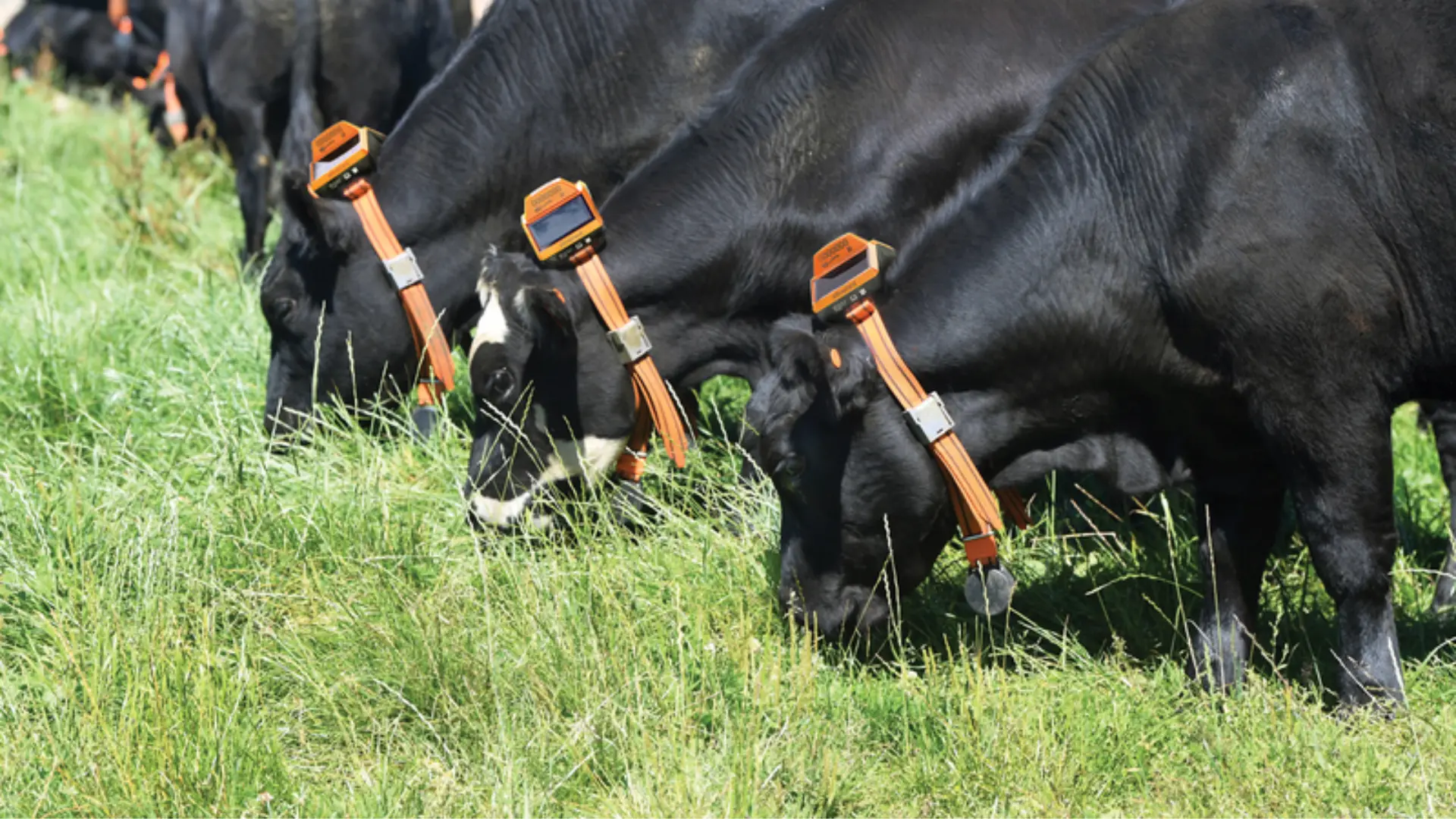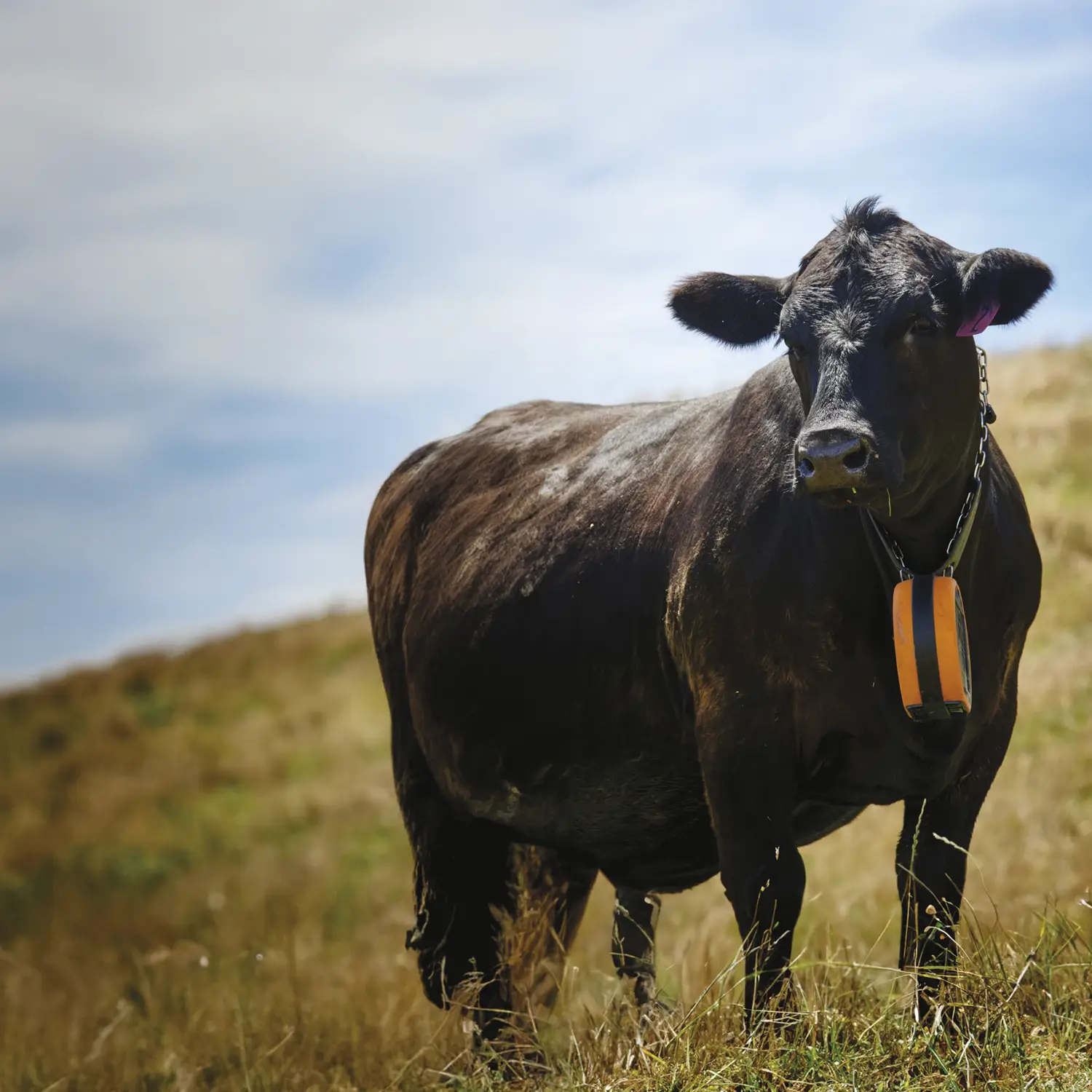NEW - Virtual Fence for Your Farm COMING SOON

What is a virtual fence?
Virtual fences are a cutting-edge system that creates invisible boundaries for livestock management or property security using advanced technology. Instead of traditional physical fences, such as electric fences, virtual fences utilize GPS, wireless communication, and animal-friendly stimulus impulses to keep animals within defined areas or secure boundaries without the need for physical barriers. This revolutionary approach offers numerous benefits and opens up new possibilities for various industries.
Gallagher's virtual fence is a solar-powered, GPS-enabled collar for livestock management. This collar allows you to track, fence, and move your livestock on your farm using virtual boundaries or fences. Simply draw your virtual fence anywhere on your property, and your livestock will be trained to stay within the virtual barrier. Track, manage, fence, and move your livestock remotely. Anytime, anywhere.
If you are looking for an innovative and effective solution for managing your livestock or securing your property, virtual fences are the perfect choice. With its state-of-the-art technology and remarkable versatility, the virtual fence has revolutionized the way we control and protect our spaces.
How does it work?
Curious about how virtual fences work? Let us explain. A virtual fence is created in the associated software and transmitted via a base station on your farm to the collars of the animals.
The animals wearing the collar are trained to understand the virtual boundaries and to stay within them. As an animal approaches the fence, the collar emits an acoustic signal (beep). If the animal ignores the cue and continues to approach the fence, the collar delivers a deterrent but harmless impulse. The impulses are automatic, predictable, and avoidable, allowing the animals to quickly learn to respond solely to the acoustic signal.
Costs for virtual fences
If you are considering virtual fences for the safety of your animals or property, you may be wondering about the costs. While the initial investment may be higher than that of traditional fences, the long-term benefits and savings potential make this decision worthwhile. Virtual fences reduce maintenance efforts, allow for flexible reconfiguration, and improve overall efficiency in managing livestock, making them a cost-effective and sustainable solution in the long run. As the virtual fence is not yet on the market, the exact costs are still unknown. Once the first virtual fences become available, we will update the information on this page.
Virtual fence for cattle
Intelligent cattle management with virtual fences! The introduction of virtual fences for cattle offers a range of benefits. It enables precise grazing management, promotes rotational grazing, and optimizes pasture usage. The system ensures that livestock stays within the designated grazing areas, minimizing overgrazing and preserving pasture health. This not only benefits the cattle but also improves soil productivity overall.


Advantages of virtual fences
- Very easy installation
- Easier grazing of hard-to-fence land
- Long-term cost-effective solution
- Remote monitoring of your livestock
- Operate a more efficient and thriving pasture
Disadvantages of virtual fences
- Relatively high initial investment
- Only suitable for enclosures, not for exclusions
FAQ for virtual fencing systems:
What are the advantages of a virtual fence compared to traditional physical fences?
The system is designed to enhance productivity, profitability, and sustainability in beef production, offering a solution to track, fence, and manage animals from anywhere at any time.
With this system, moving and fencing cattle is no longer dependent on where you set up a fence. An endlessly and immediately adjustable fencing solution allows you to manage your livestock anywhere on your farm by subdividing hard-to-fence paddocks into smaller grazing cells to operate a more efficient and thriving grazing system.
Improve pasture productivity by providing more dry matter, avoid overgrazing, and optimize pasture usage while reducing dependency on physical resources for fencing, such as materials and labor. The virtual fence also provides a cost-effective solution for complying with environmental regulations, sustainable practices, and protecting your land. It prevents cattle from accessing ecologically sensitive areas such as waterways, natural habitats, disaster zones, or even roaming predators.
Can I set up a virtual fence from anywhere?
Yes. The software is available on your PC, tablet, or mobile phone. As long as you have internet access, you can set up a virtual fence on your farm from anywhere in the world.
Did Gallagher develop this technology?
The virtual fencing was originally developed by the Australian government’s research organization - CSIRO. Agersens, an innovative agricultural technology company in Melbourne, developed this innovation for livestock producers around the world. Gallagher has since acquired the Agersens business and is committed to bringing this technology to market.
How long does it take to train livestock?
Training takes between 2 and 7 interactions with the fence and, depending on the size of the herd, can take anywhere from 48 hours to a week. Smaller herds are trained more quickly as they generally interact with the fence faster.
For which breeds is it suitable?
The system is suitable for all cattle breeds, but the cattle must weigh over 200 kg live weight.
Is it harmful to the animals?
No. The health and well-being of the animals were at the forefront of all design decisions during development. Following the five domains of animal welfare by RSPCA and in collaboration with various animal ethics committees and authorities, it ensures that the final solution leads to a positive outcome for happier and healthier animals.
When will the system be available for purchase?
Gallagher is currently in the final phase of a beta program in New Zealand. Following successful beta tests, work is underway to offer the system commercially in New Zealand, Queensland, Western Australia, and Tasmania (as of 2023). Plans for the rest of the world have not yet been confirmed.
If you have further questions or would like to explore the benefits of the virtual fence for your specific needs, please contact our team. We are here to help you discover the future of fencing and unlock the full potential of your herd.